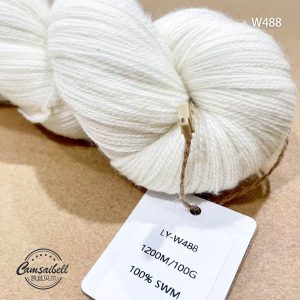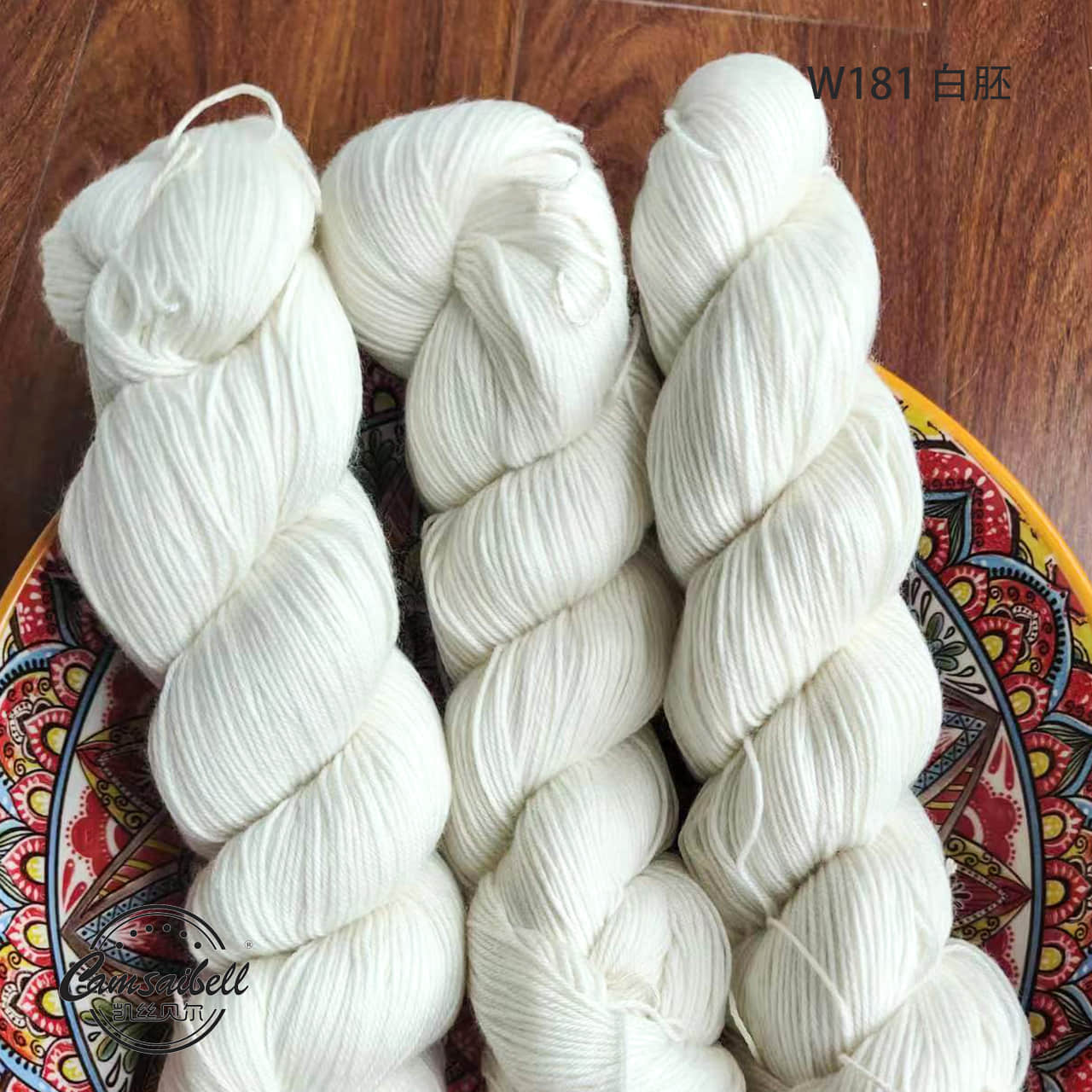Sock yarn is the main raw material in sock production. Yarn determines the comfort, durability and appearance of socks. Choosing the right sock yarn can not only improve product quality, but also affect production efficiency and user satisfaction. Therefore, choosing sock yarn becomes very important. This article will introduce the weight, specifications, uses, etc. of sock yarn in depth to help you choose the best sock yarn reasonably.

What is sock yarn?
Sock yarn is a yarn specially used for weaving, knitting or sewing socks, and is usually required to have softness, elasticity, moisture absorption and wear resistance. Sock yarn can be made from a variety of raw materials, such as:
Cotton yarn (combed cotton, ring-spun cotton, etc.)
Polyester yarn (polyester yarn)
Nylon yarn (nylon)
Spandex (elastic yarn)
Wool or cashmere
Regenerated fibers such as bamboo fiber and modal
These yarns can be used alone, and are often blended with multiple yarns to achieve better comfort and functionality.
What is the weight of sock yarn?
The weight of sock yarn is usually measured in “count” or “denier/dtex”, and the specific weight varies depending on the thickness and material:
| Yarn Type | Typical Weight Range | Notes |
| Cotton Yarn | 20s – 40s (English Count) | The higher the number, the finer the yarn |
| Nylon Yarn | 70D – 150D | Higher denier = thicker, ideal for sports |
| Spandex Yarn | 20D – 40D | Used for elasticity, blended with other yarns |
| Standard Cone | 1kg – 2kg (net weight) | For machine knitting or circular machines |
Weight is also related to the thickness and warmth of socks. For example, winter socks usually use thicker yarns.
Sock yarn size
The size of sock yarn depends on its thickness, twist and fiber type. Common units include:
Imperial count (Ne): For example, 20s, 30s, the larger the number, the thinner it is;
Metric count (Nm): For example, 30Nm, that is, 30,000 meters per kilogram;
Denier (D): The larger the number, the thicker it is, commonly used for chemical fibers such as nylon;
Yarn diameter: Some manufacturers will also mark the physical diameter, such as 0.1mm – 0.4mm;
In addition, sock machines (such as 200 needles, 144 needles, etc.) have requirements for yarn thickness, and matching sizes need to be selected according to equipment specifications.

Main uses of sock yarn
Sock yarn is widely used in the following scenarios:
Daily casual socks: mainly cotton or blended cotton, focusing on comfort and breathability;
Sports socks: nylon + elastic yarn are used together to enhance wear resistance and stretchability;
Functional socks: bamboo fiber, modal, etc., with good antibacterial and deodorizing effects;
Warm socks: thickened wool yarn is used in autumn and winter;
Fashion socks: use colored dyed yarn, gold and silver threads, etc. to enhance the appearance;
Baby socks: require extreme softness and non-irritation, mostly use combed cotton or natural fibers.
Comparative analysis of sock yarn and other yarns
| Feature | Sock Yarn | Garment Yarn | Sweater Yarn |
| Softness | High (for close skin use) | Medium | High |
| Elasticity | Strong (contains spandex) | Usually low | Moderate (e.g., wool) |
| Abrasion Resistance | High | Moderate | Low |
| Yarn Stability | High-speed knit-friendly | Less suitable for fast cycles | Hand-knitting friendly |
| Moisture Wicking | Excellent (cotton, bamboo) | Varies by material | Weak |
| Colorfastness | High (anti-fade) | Medium | Prone to fading |
Compared with other yarns, sock yarn emphasizes elasticity, wear resistance, comfort and fineness.
How to choose the best sock yarn?
When choosing sock yarn, it is recommended to consider the following aspects:
Purpose matching: Is it sports socks, daily socks or baby socks? Determine the material type;
Material quality: Prefer high-quality raw materials such as combed cotton, long-fiber polyester, nylon 66, etc.;
Yarn thickness: Match the count or Denier according to the number of needles or weaving density of the sock machine;
Is it environmentally friendly: You can choose OEKO-TEX, GOTS and other certified environmentally friendly yarns;
Color fastness and stability: Avoid fading or deformation of socks after washing;
Brand and reputation: It is recommended to choose well-known yarn brands or manufacturers with good customer feedback;
Sample first: Purchase a small sample for proofing test to determine the feel and adaptability.
How much yarn is needed for a pair of socks?
A pair of adult socks (medium length) requires about 25g – 40g of yarn, depending on the following factors:
| Factor | Influence on Yarn Usage |
| Foot Size | Men’s > Women’s > Children’s |
| Sock Length | Crew > Ankle > No-show |
| Yarn Type | Cotton heavier than nylon (same volume) |
| Yarn Thickness | Thicker yarn uses more grams |
| Use of Elastic Yarn | Blending increases total weight slightly |
For example: using 32s cotton yarn + 20D spandex yarn, a pair of adult sports socks uses about 35 grams of yarn.
Where to buy sock yarn?
The main channels for purchasing sock yarn include:
Yarn wholesale market: such as Shaoxing, Zhangjiagang, Guangzhou Zhongda Yarn Market in China;
Online B2B platform: Alibaba, Made-in-China, Yarn Network;
E-commerce platform: Taobao, JD.com, Pinduoduo, Xiaohongshu, etc. are suitable for small batches;
Brand manufacturer official website: such as loyalyarns, Huafu, Sanmao, Bailong, etc.;
Industrial exhibition/trade fair: such as textile fabric exhibition, sock manufacturing technology exhibition, etc.;
Cross-border channels: Amazon, AliExpress, Etsy (suitable for overseas buyers);
Purchase suggestion: Try to sample the first order to verify the stability of the yarn and the compatibility of the equipment.
Conclusión
As the core material of socks, sock yarn has strict requirements in terms of performance, process and dosage. High-quality sock yarn directly determines the comfort and appearance of socks, so before purchasing sock yarn, you should fully examine the material, weight, size and elasticity, and choose the right yarn according to the equipment requirements to achieve the best cost performance. For manufacturers, hand knitters and cross-border sellers, finding a reliable yarn supplier, conducting sample verification and establishing long-term cooperative relationships are the key to stabilizing product quality and reducing costs.





